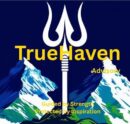How Much Life Insurance Do I Actually Need? A Simple Guide for Trinidad & Tobago
Introduction: Moving from “If” to “How Much”
In our last article, we talked about why even young professionals in Trinidad & Tobago need life insurance. Now, we’ll tackle the next logical—and often most intimidating—question: “Okay, I’m convinced… but how much coverage do I actually need?”
It’s the question every responsible person asks themselves, often in the quiet moments of the night: ‘If I weren’t here tomorrow, would my family be okay?’ Most people know they need life insurance, but the ‘how much’ is a confusing and intimidating mystery. Forget the complicated formulas and the generic ’10x your salary’ rule of thumb. Today, we’re going to give you a simple, powerful framework to find your family’s true number. On the other end of the spectrum, there are complex economic models like the “Financial Needs Analysis” / “Capital Needs Analysis” Method and the “Human Life Value” calculation, which attempts to put a present-day dollar value on your future earnings.
While these methods have their place, the “Rule of Thumb” is often too generic, and the complex models can be impractical for a real-world family plan.
At TrueHaven Advisory, we believe in clarity and practicality. That’s why today, we’re going to focus on the most effective framework for most families: the D.I.M.E. method. It’s a powerful, needs-based approach that moves beyond guesswork to give you a realistic and meaningful number, ensuring your family is truly protected, not just partially covered.
The D.I.M.E. Method: A Simple Framework for a Solid Number
A great way to get a solid baseline for your life insurance needs is the D.I.M.E. method. It’s an acronym that covers the four major financial obligations you’d want to handle for your loved ones.
D – Debt:
The first and most immediate burden your family would face is debt. Your life insurance should, at a minimum, be able to wipe the slate clean.
Action: Add up all your outstanding debts:
Your mortgage balance.
Any car loans.
Credit card balances.
Student loans or any other personal loans.
Total Debt: $_________
I – Income Replacement:
This is the heart of life insurance. It’s about replacing your contribution to the household income so your family can maintain their standard of living.
Action: Take your annual salary and multiply it by the number of years your family would need support until your children are independent (e.g., 10, 15, or 20 years).
Example: $120,000 TT annual income x 15 years = $1,800,000 TT.
Total Income to Replace: $_________
M – Mortgage / Rent:
Even if you include your mortgage in the “Debt” section to be paid off, you might want to consider future housing costs. If your goal is to pay off the mortgage completely, this is covered. If not, you’d calculate rent. For most, paying off the mortgage is the primary goal here.
Action: Ensure your full, outstanding mortgage balance is listed in the “Debt” section.
E – Education:
This is for your children’s future. You want to ensure your dreams for their education can still come true.
Action: Estimate the future cost of tertiary education (university, trade school) for each of your children. Consider tuition, books, and living expenses.
Example: $150,000 TT per child x 2 children = $300,000 TT.
Total Education Fund: $_________
Your Baseline Life Insurance Need:
Debt + Income Replacement + Education = Your Total Coverage Amount
Jagdish’s Insight:
“This number can look large and intimidating, but don’t panic. The cost of a term life insurance policy that covers this amount is often surprisingly affordable, especially when you’re younger. The peace of mind this number provides is immeasurable.”
Don’t Forget Final Expenses & Other Considerations
Beyond the D.I.M.E. method, remember to factor in:
Final Expenses: The cost of a funeral in Trinidad & Tobago can easily be $20,000 – $50,000 TT or more. You’ll want to add this to your total.
Existing Savings & Insurance: You can subtract any existing life insurance policies (like your group plan from work) or dedicated savings from your final number.
Conclusion: From an Intimidating Number to an Actionable Plan
Calculating your life insurance need isn’t about dwelling on a negative outcome; it’s about taking powerful, positive action to protect the people you love. It’s about turning financial anxiety into a concrete, manageable plan.
The D.I.M.E. method gives you a strong, logical starting point. It replaces guesswork with a clear calculation based on your real-life circumstances.
Ready to Find Your Number?
Contact Jagdish Ramkissoon at TrueHaven Advisory. Book a Free 20-Minute Strategy Call. We can walk through this calculation with you, explore different scenarios, and find an affordable Maritime Financial policy that provides the exact coverage your family needs. Call us at 678-4825 or visit https://truehavenadvisory.com/



